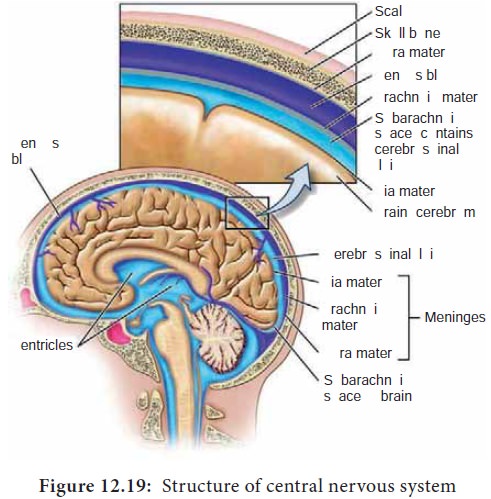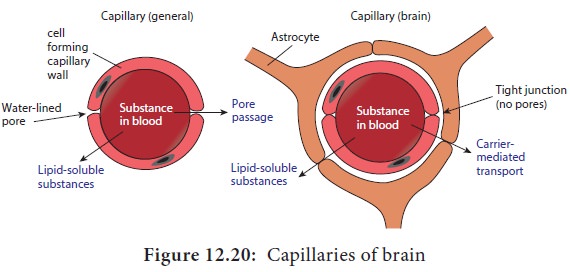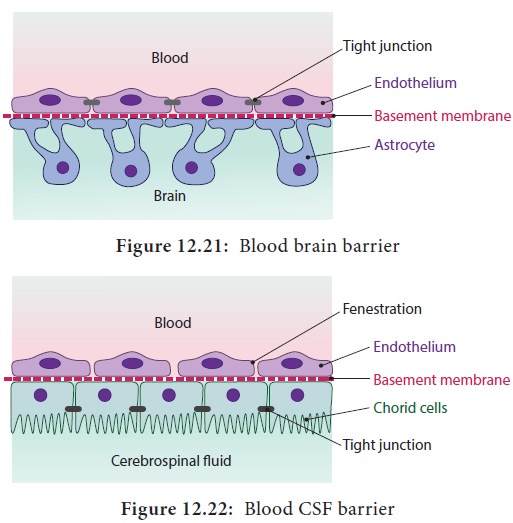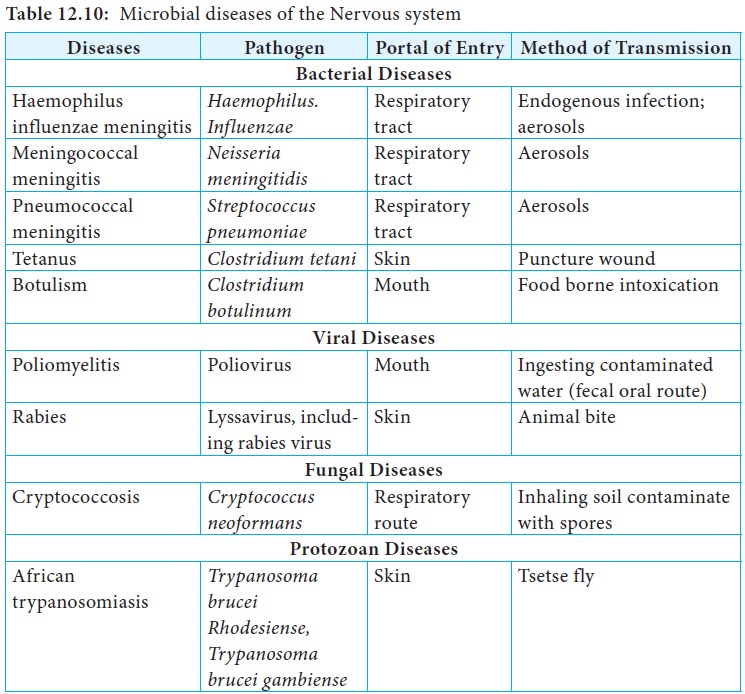Chapter: 11th Microbiology : Chapter 12 : Medical Microbiology
Infections of the Nervous System
Infections of the Nervous System
Some of the most devastating infectious diseases are those that
affect the nervous system, especially the brain and the spinal cord. Damage to
these areas can lead to deafness, blindness, learning disabilities, paralysis
and death. Microbial infections of CNS are infrequent but often have serious
consequences. In pre antibiotic times, they were almost always fatal. An
infection of CNS can be life threatening condition, especially for children
with weakened immune system. These infections need quick diagnosis and
immediate treatment by an infectious disease specialist. Bacteria, Fungi and
viruses are the most common causes of CNS infections.
Structure of Nervous System
The human nervous system is organized into two divisions: The
Central Nervous System (CNS) and Peripheral Nervous System (PNS). The Central
Nervous System (CNS) consists of brain and spinal cord. It controls most
functions of the body and mind. The peripheral nervous system (PNS) consists of
all the nerves that branch off from the brain and spinal cord. These peripheral
nerves are the lines of communication between the CNS, the various parts of the
body and the external environment (Figure 12.19).
Brain and spinal cord are covered by three layers of membranes
called meninges. These layers are the outermost dura mater, the middle
arachnoid mater, and the innermost pia mater. Between the pia mater and
arachnoid membranes is a space called the subarachnoid space, in which there is
cerebrospinal fluid (CSF) circulating.

Barriers of CNS
Dyes such as Trypan blue injected into the systemic circulation
stain virtually all tissues, with the exception of the brain and spinal cord.
This blood brain barrier excludes most macromolecules, microorganisms,
immunocompetent cells and antibodies. Even pathogens that are circulating in
the bloodstream usually cannot enter the brain and spinal cord because of blood
brain barrier. Certain capillaries permit some substances to pass from the
blood into the brain but restricts others. These capillaries are less permeable
than others within the body and are therefore more selective in passing
materials (Figure 12.20). The blood brain barrier (Figure 12.21) is due to the
cellular configuration of cerebral capillaries, the choroid plexus and
arachnoid cells. It acts as a natural barrier that prevents the invasion of
microorganisms into the brain. If this is breached organisms enter the brain.
The blood CSF barrier (Figure 12.22) (also calle brain CSF barrier) consists of
endothelium with fenestrations, and tightly joined choroid plexus epithelial
cells. It acts as a natural barrier that prevents the invasion of
microorganisms into the meninges.


Routes through which microorganisms enter nervous system
·
Skull or bone fractures
·
Medical procedures
·
Peripheral nerves
·
Blood or lymph
Clinical Manifestations of Nervous System Infections
Some of the symptoms of nervous System infections are headache,
fever, stiff neck, focal signs, seizures, confusion, weakness, hallucinations,
stupor, coma, abnormal behavior and sleep disorder
Infections of Nervous System
·
Meningitis is an inflammation of the meninges (membrane covering
the brain). Meningitis is a diffuse infection caused by a variety of different
agents.
·
Encephalitis is defined as inflammation of the brain. Unlike an
abscess, which is a localised area of bacterial or fungal growth, Encephalitis
is usually due to viruses that produce more widespread intracellular
infections.
·
Brain abcess is a focus of purulent infection and is usually due
to bacteria. Brain abscesses develop from either a contiguous focus of
infection (such as the ears, the sinuses, or the teeth) or hematogenous spread
from a distant focus (such as the lungs or heart, particularly with chronic
purulent pulmonary disease, subacute bacterial endocarditis, or cyanotic
congenital heart disease). In many cases the source is undetectable.
Etiological agents of Meningitis
This can be caused by a wide range of microorganisms and can be
classified as pyogenic and non pyogenic meningitis. In pyogenic meningitis
infiltration of pus cells (neutrophils) will be seen. In Non pyogenic or
aseptic meningitis infiltration of lymphocytes may be seen. Diseases of nervous
system are listed in Table 12.10.

Related Topics